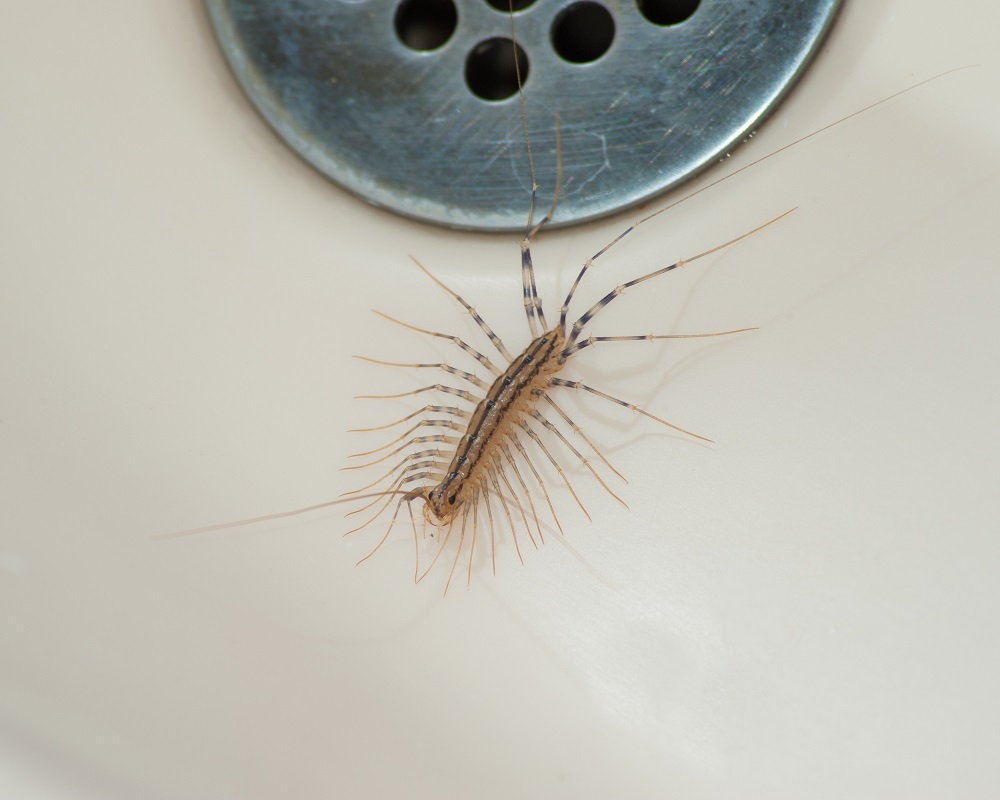What’s that skittering around your floor?
House centipedes and silverfish are common year-round pests. These insects may even resemble one another if you’re unfamiliar with the bugs!
Keep reading our article to learn more about a house centipede vs. silverfish infestation. We have the best tips and tricks to keep your home pest-free!
Did You Find a House Centipede or Silverfish?
House centipedes look a little different from typical garden centipedes. Both species can survive outdoors, but you’re more likely to find house centipedes living it up inside.
These household pests look much differently than their outdoor counterparts too. House centipedes have around fifteen long, thin legs that branch out from their slender bodies. While small in stature, their antennae and hind legs are almost twice the length of their bodies.
Centipedes can come in many different colors, but house centipedes tend to stay a muted brown or tan hue. If you get close enough to take a good peak, you can see tiny black markings decorating their exoskeleton.
Don’t forget that these little critters are fast too! While most centipedes can rush away when threatened, house centipedes’ many legs can help them hurry away at the first sign of danger, clearing a few feet in only seconds.
Silverfish are adept movers too. If you happen upon a few sneaking through your possessions, they tend to scatter quickly. Hey, no one likes to get caught!
While a silverfish’s fast pace may rival a house centipede, these little critters don’t look much like the other indoor pests. As their name suggests, silverfish have a shiny metallic hue because of their small silver scales.
Unlike house centipedes, silverfish only have six legs, but that doesn’t mean they can’t move fast! A silverfish’s six legs are on the upper portion of its body, with three small appendages on the bottom of its body.
With long, wiry antennae and a shiny silver sheen, it’s hard to mistake a silverfish for a house centipede. Silverfish are much smaller and aren’t even as large as a nickel! While their many legs make them look much larger, house centipedes are more sizable at around 4 inches long.
To avoid misidentification, take a good look at the insect in your home. While house centipedes aren’t a danger indoors, silverfish can cause damage to many of the objects in your home that your hold dear.
House Centipede vs. Silverfish Locations
Centipedes and silverfish are common indoor pests but tend to flock to different areas.
Outdoors, centipedes may congregate in wood, leaf, or debris piles, hiding in the brush for shelter and warmth. Once indoors, you can typically find house centipedes in damp or warm spaces.
Common inhabitants of bathrooms and basements, house centipedes enjoy these often wet locations. Crawlspaces, under-sink cabinets, and even your garage can house these multi-legged arthropods.
Because house centipedes are primarily carnivorous, they’ll stick around other places rife with food too! Cockroaches, moths, and spiders may become prey to these fast critters. Silverfish too!
While finding a house centipede out and about is easy, you may only see silverfish whenever you stumble upon their feeding grounds. Silverfish can eat your pantry items but primarily consume many of your household items.
It’s normal to find silverfish in your sugary substances or grain products, but don’t be surprised to find these pests chomping through your latest book find! They will eat paper, glue, wallpaper, hair, and photographs.
Because these tiny insects aren’t fans of bright lights, you’ll unlikely see them roaming around your home. Most homeowners catch sight of a silverfish infestation after discovering damage to their possessions.
Don’t forget that these pests are fast too! Even if you find one munching on your cereal or books, you must act quickly to catch it.
Centipede and Silverfish Damage
One of the key differences between a house centipede vs. silverfish infestation is the damage the pests cause.
Unlike other indoor invaders, house centipedes can’t cause interior or exterior damage to your home. Because their diet consists of other insects, house centipedes will only eat the other creepy crawlers you have inside.
Most centipedes are venomous and can deliver a painful bite, but you shouldn’t worry about them causing you any harm. House centipedes aren’t typically aggressive and won’t bite you unless threatened.

Silverfish, however, are notorious for their impact on your home. While they can’t cause direct harm or injury, they can destroy many possessions you hold dear, like antique novels or family pictures.
Besides destroying your items, silverfish can also make a dent in your groceries. As a purveyor of starchy and sugary foodstuffs, these insects may make your pantry their buffet!
These pests can stick around for quite some time, too. A silverfish’s average lifespan can reach up to three years, meaning they’ll have ample time to destroy your home.
Removing an Infestation: House Centipede vs. Silverfish
House centipedes aren’t destructive like silverfish. However, that doesn’t mean you want to live with pests milling about your home! Beyond being a visual nuisance, finding house centipedes may indicate an additional pest problem.
We recommend frequently cleaning damp areas and repairing appliance and roof leaks to eliminate house centipedes. If wet and warm spots are inside, they won’t be too quick to leave. A dehumidifier can help to make these spaces less humid.
Removing the centipedes’ food source is another excellent way to get rid of centipedes inside. Eliminating pests like silverfish, cockroaches, and spiders will help dissuade house centipedes from coming inside and sticking around.
There are many silverfish traps you can create on your own too! Check out the video below to learn more.
Don’t worry about house centipede vs. silverfish infestation! If you’re still having trouble with either insect, contact us to schedule an appointment! We’re happy to help with any of your pest problems!

